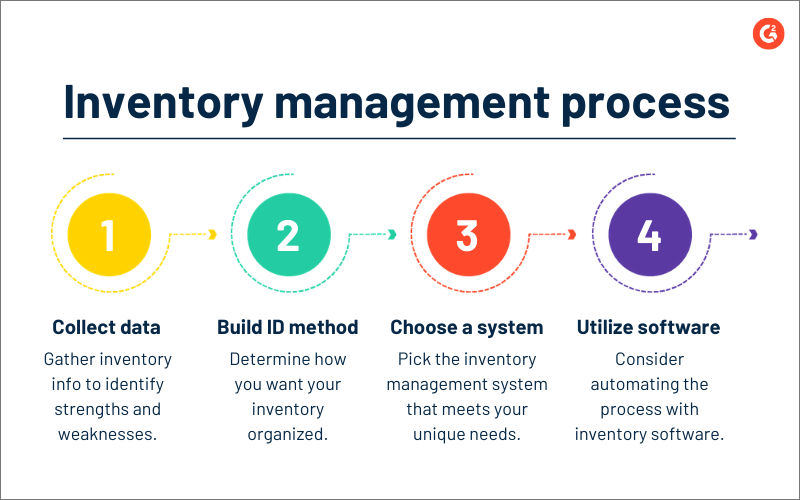Rumored Buzz on Inventory Management
Wiki Article
How Inventory Management can Save You Time, Stress, and Money.
Table of ContentsFascination About Inventory ManagementThe 6-Second Trick For Inventory ManagementNot known Facts About Inventory ManagementThe Only Guide to Inventory Management
There are 2 major methods of keeping an eye on inventory: regular and perpetual. The major difference in between these is just how often data is updated. Despite how commonly you track inventory, you may wish to utilize among the adhering to stock monitoring techniques: ABC Analysis, ABC (Always Better Control) Evaluation is inventory administration that divides numerous items right into 3 categories based upon pricing and also is divided right into groups A, B, or C.The things in the B category are relatively more affordable compared to the A classification. As well as the C group has the least expensive items of all 3. EOQ Version, Economic Order Amount is a technique utilized for preparation and getting an order amount. It involves deciding regarding the amount of supply that need to be put in supply at any type of offered time. Inventory Management.
FSN Method, This approach of inventory control describes the procedure of maintaining track of all the items of stock that are not used regularly or are not required all the time. They are after that classified into three various categories: fast-moving supply, slow-moving supply, and non-moving stock. JIT Method, Simply In Time stock control is a process utilized by producers to control their supply degrees.

The Best Strategy To Use For Inventory Management
VED Evaluation, VED is a method utilized by companies to manage their stock. It mostly relates to the management of vital and preferable spare components. The high degree of stock that is required for production typically justifies the low stock for those components. One of one of the most vital factors that a business should think about is the accuracy of the info offered in its stock databases.Wrike is a project management solution that can aid you do exactly that. With Wrike's product monitoring devices, you can take care of all of your item group's tasks in one location and get the most out of every job. Wrike's product launch automation aids accelerate product launches with a streamlined method.


Some Known Incorrect Statements About Inventory Management
Supply monitoring describes the process of getting, saving, making use of, and also marketing a firm's stock. This consists of the monitoring of basic materials, elements, and ended up products, as well as warehousing and handling of such items. There are various kinds of supply monitoring, each with its pros and disadvantages, depending upon a firm's demands.Supply management tries to successfully improve supplies to avoid both excess website link as well as lacks. Four significant inventory administration approaches include just-in-time monitoring (JIT), products need planning (MRP), financial order amount (EOQ), and days sales of stock (DSI).
A scarcity of stock when as well as where it's required can be incredibly destructive (Inventory Management). At the very same time, stock can be considered an obligation (if not in an accountancy feeling). A big stock brings the threat of spoilage, burglary, damages, or shifts popular. Supply has to be guaranteed, and if it is not marketed in time it may have to be disposed of at clearance pricesor simply damaged.
Knowing when to replenish supply, what quantities to acquire or generate, what price to payas well as when to offer as well as at what pricecan quickly ended up being complex decisions. Local business will usually track supply by hand as well as determine the reorder points as well as quantities using spread sheet (Excel) solutions. Larger businesses will certainly make use of specific venture source planning (ERP) software application.
Not known Facts About Inventory Management
Proper supply management techniques vary depending on the market. An oil depot is able to keep big quantities of stock for extended time periods, allowing it to wait on demand to grab. While storing oil is costly and riskya fire in the U.K. in 2005 resulted in countless pounds in damage as well as finesthere is no threat that the inventory will certainly spoil or go out of style.For anonymous business with intricate supply chains and producing processes, stabilizing the dangers of stock excess and lacks is especially difficult. To achieve these equilibriums, firms have established numerous approaches for inventory administration, consisting of just-in-time (JIT) and also products need preparation (MRP). Some business, More hints such as monetary services firms, do not have physical stock therefore must depend on solution process management.
Supply needs to be literally counted or determined before it can be placed on an annual report. Business normally keep innovative supply administration systems efficient in tracking real-time inventory levels. Inventory is represented using among three techniques: first-in-first-out (FIFO) costing; last-in-first-out (LIFO) costing; or weighted-average costing. An inventory account typically contains four separate classifications: Resources stand for numerous materials a company acquisitions for its manufacturing process.
Job in procedure (also understood as goods-in-process) represents basic materials in the procedure of being changed into a finished item. Ended up products are completed products easily available offer for sale to a company's consumers. Merchandise represents completed items a firm acquires from a vendor for future resale. Depending on the type of service or item being evaluated, a firm will make use of various stock administration techniques.
Report this wiki page